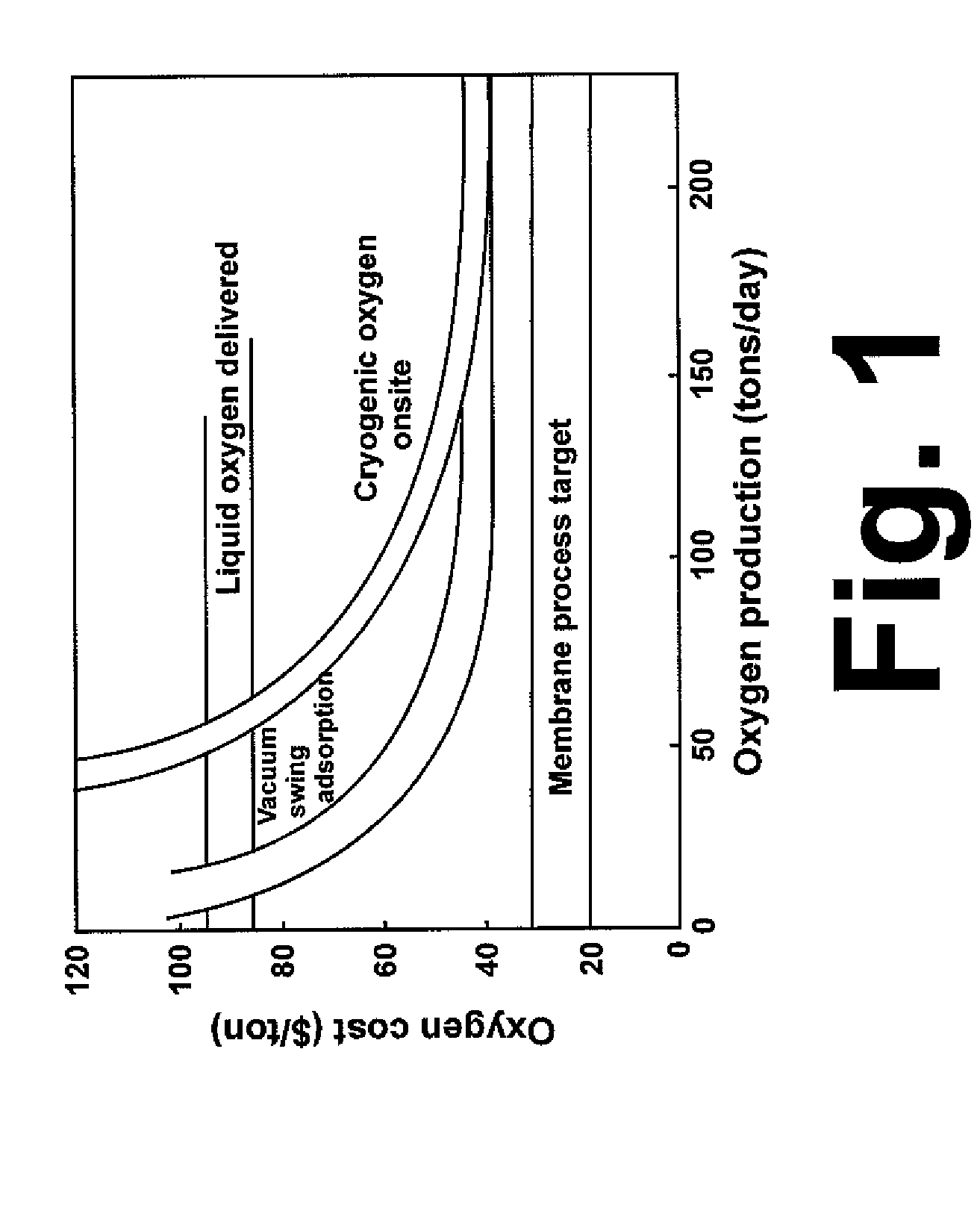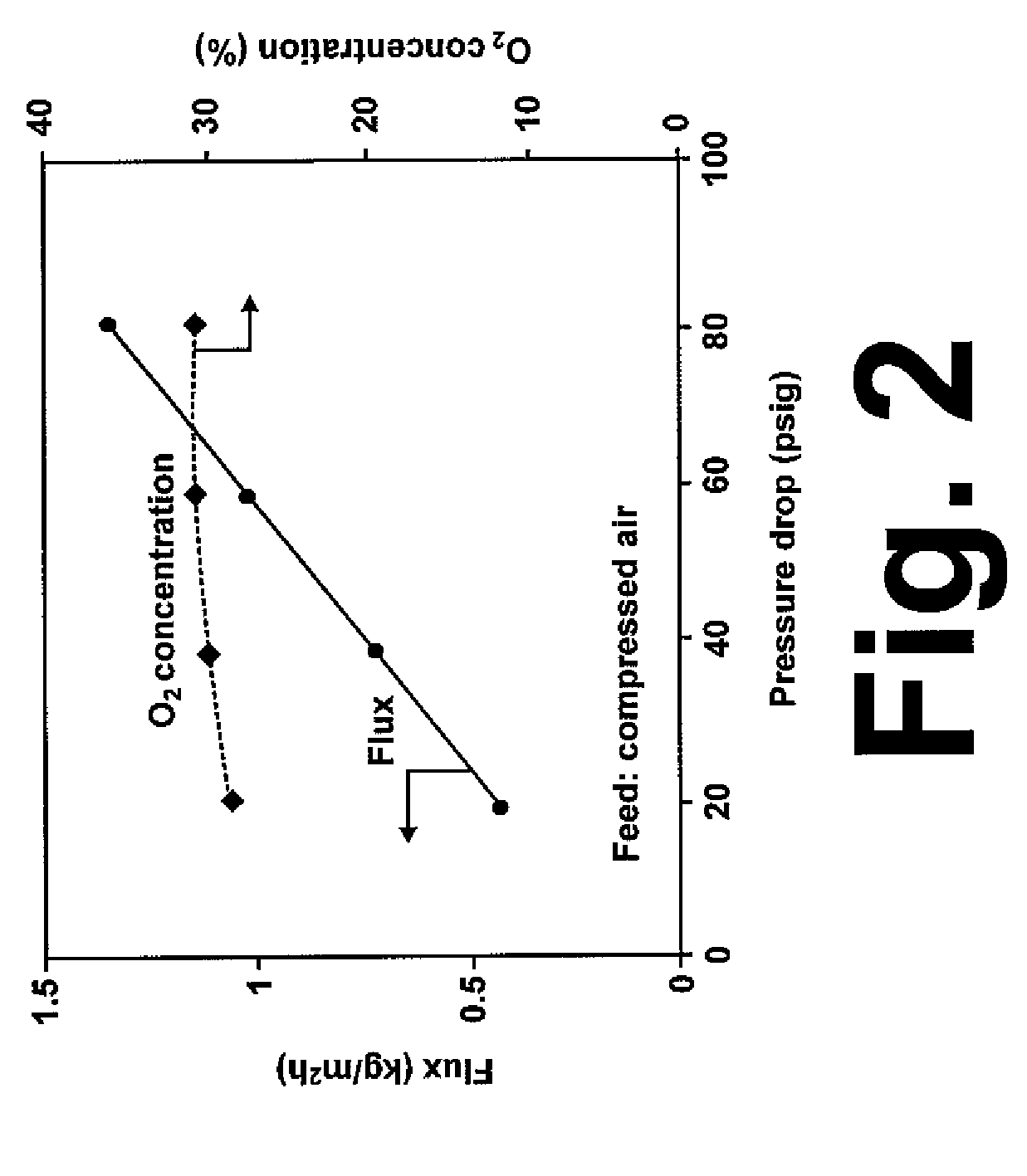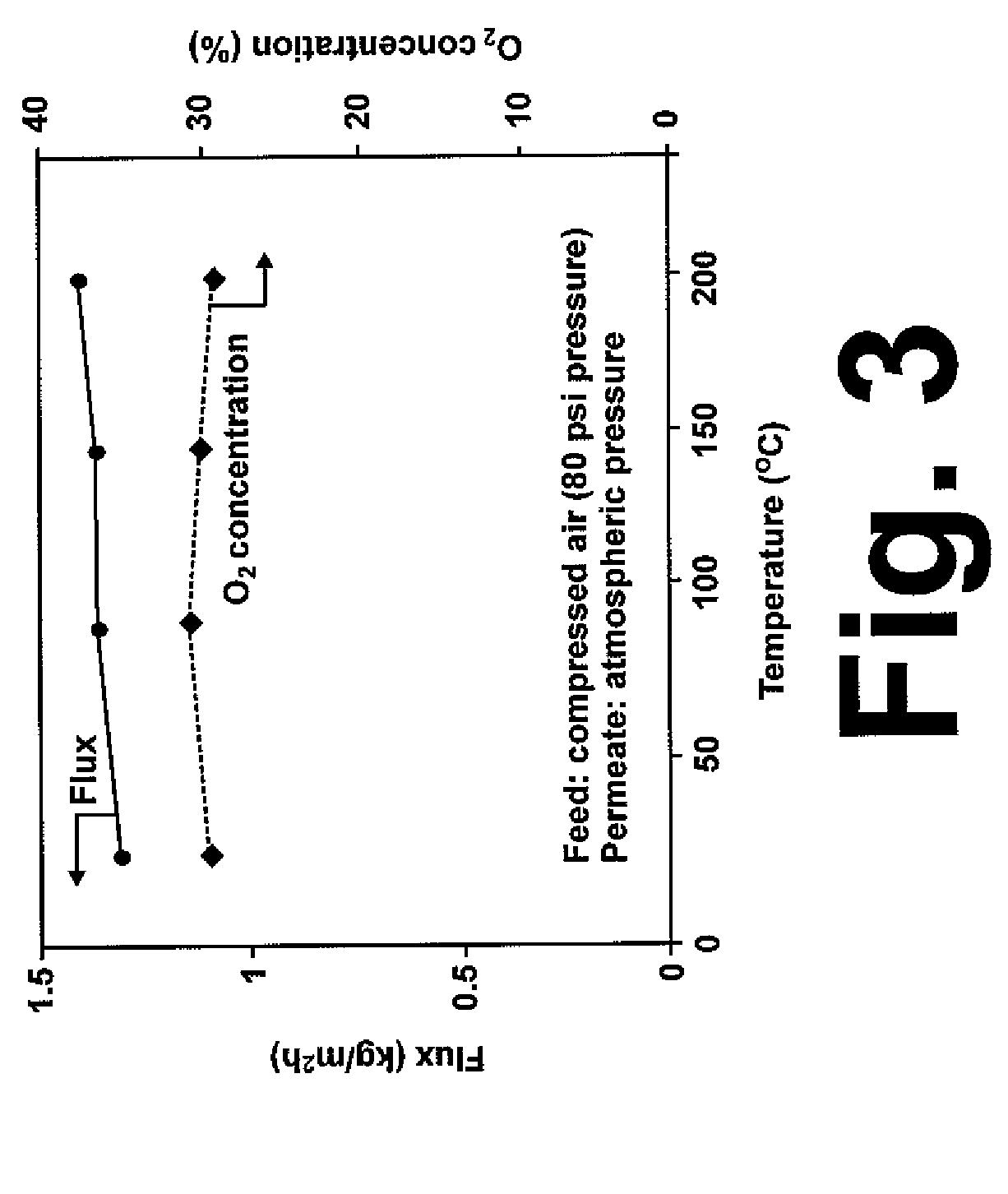Oxygen enrichment using small-pore silicoaluminophosphate membranes
a technology of silicoaluminophosphate and molecular sieve, which is applied in the direction of pretreatment surfaces, inorganic chemistry, chemical/physical processes, etc., can solve the problems of high cost associated with these technologies, and achieve the effect of reducing pores, improving o2/n2 selectivity, and high adsorption capacity for o2
- Summary
- Abstract
- Description
- Claims
- Application Information
AI Technical Summary
Benefits of technology
Problems solved by technology
Method used
Image
Examples
example 1
[0025]In this example, a conventional SAPO-34 molecular sieve membrane made in accordance with conventional methods and a SAPO-34 molecular sieve membrane made in accordance with the method of this invention were produced and their performances compared. Table 1 shows a comparison of a conventional method for producing SAPO-34 molecular sieve membranes and the method in accordance with one embodiment of this invention for producing SAPO-34 molecular sieve membranes. The primary difference between the conventional method and the method of this invention as shown in Table 1 is in the seeds gel and membranes gel compositions employed. In particular, although the amount of SiO2 employed is slightly different, the primary difference is in the amount of water employed. As can clearly be seen, this difference results in a substantially less amount of time required to produce the membrane of this invention compared with the conventionally produced membrane. As will be seen herein below, in ...
example 2
[0029]In this example, a membrane was produced in accordance with one embodiment of the method of this invention in which a conventional calcination process was employed as opposed to the two step calcination process discussed herein above. Table 3 shows the membrane preparation conditions.
[0030]
TABLE 3Membrane Preparation ConditionsSeeds gel1.0 Al2O3: 1.0 P2O5: 0.4 SiO2: 1.0 TEAOH: 0.8compositiondipropylamine: 0.8 cyclohexylamine: 120 H2OMembrane gel1.0 Al2O3: 1.0 P2O5: 0.4 SiO2: 1.0 TEAOH: 1.6compositiondipropylamine: 120 H2OGel aging time3 hrsCrystallization time220° C. for 6 hrsCalcinationCalcined in air at 400° C. for 8 hrs, heating andcooling rates of 0.7 and 0.9° C. / min, respectively
[0031]Table 4 shows a comparison of the performance of the membrane produced in accordance with one embodiment of the method of this invention as shown in Table 3 and a membrane produced in accordance with one embodiment of the method of this invention in which a two-step calcination process is em...
example 3
[0034]In this example, the membrane of this invention produced in Example 1 was subjected to a post-treatment process in which the membrane was soaked in a 1.2% aqueous solution of β-cyclodextrin at room temperature for 0.5 hrs and subsequently dried for 4 hrs at about 200° C. Table 5 shows a comparison of the performance of the membrane of this invention before and after treatment with cyclodextrin. As shown therein, the flux rate is reduced by the post-treatment, which would be expected due to the reduction in non-zeolite pores, but the oxygen enrichment is nearly 10% greater, believed to be due to a slight reduction in the zeolite pores which would decrease the diffusion rate of N2 more than that of O2, thereby increasing the O2 / N2 selectivity.
[0035]
TABLE 5Oxygen enrichment before and after post-treatmentMembraneFlux (mol / m2 − s)Oxygen enrichmentMembrane before cyclodextrin6.64E−429.3%treatmentMembrane after cyclodextrin4.14E−0432.2%treatment
Other possible post-treatment methods ...
PUM
| Property | Measurement | Unit |
|---|---|---|
| size | aaaaa | aaaaa |
| temperature | aaaaa | aaaaa |
| temperature | aaaaa | aaaaa |
Abstract
Description
Claims
Application Information
 Login to View More
Login to View More - R&D
- Intellectual Property
- Life Sciences
- Materials
- Tech Scout
- Unparalleled Data Quality
- Higher Quality Content
- 60% Fewer Hallucinations
Browse by: Latest US Patents, China's latest patents, Technical Efficacy Thesaurus, Application Domain, Technology Topic, Popular Technical Reports.
© 2025 PatSnap. All rights reserved.Legal|Privacy policy|Modern Slavery Act Transparency Statement|Sitemap|About US| Contact US: help@patsnap.com



